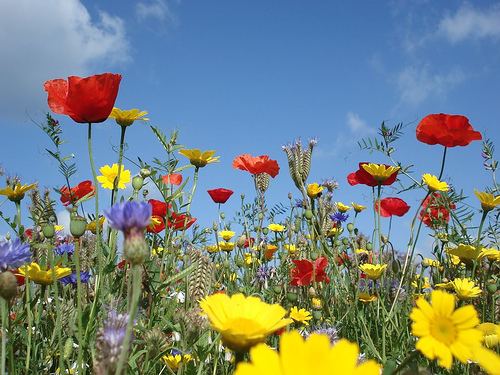Recipes irritate me. As I was reading "The Anatomy of a Recipe," a piece by MFK Fisher describing the components, composition, and evolution of recipes, I realised what my gripe was. Recipes are intended to be organized, logical pieces that delineate the creation of some dish. The quantities of ingredients should be listed in order of addition, measurements included, directions simple and easy to understand. However, in most of my cooking endeavors, I have often found that taking a risk and trying something new, based on a recipe either from a book or the Internet, is rampant with possibilities for disaster, fraught with uncertainty and situational variation. As MFK Fisher notes, recipes used to be simple and short, with (shockingly) no measurements or helpful qualifiers such as to toast "until golden" or ensure "even browning." They lacked specific time directions, and could even be confusing because of the lack of specificity, orderly prescription of actions, and assumptions.Mrs. Morice's Brandy Cake recipe is an example of this, as Fisher notes that "the mace and nutmeg which have been prescribed are not mentioned again. Any idiot knows that they could be sifted in with the flour, and that of course they would be grated or powdered...but as a spoiled idiot-child of the twentieth century, I want to be
told." Now I disagree with his statement that I am a spoiled idiot-child. Even the most clear recipe cannot account for the variation of a different time, setting, even type of cookware, freshness of ingredient, humidity, etc, etc. But Fisher's main point is that a recipe ought to be like a manual, precise and accessible to any type of user. This means that the recipe will list all ingredients and quantities, what cookware needed, and the steps in order, with tips as necessary. Of course I'd like to be
told how to make something...but in the end, even if a recipe has all these things, the probability of something happening is high, especially if I have to consult a cookbook to cook in the
first place. After reading both "Anatomy of a Recipe" and "Recipes," I have come to the conclusion that I have more faith in "aide memoire," recipes that are merely reminders about food that I'm familiar with or have seen others work with. This of course, assumes familiarity with the ingredients and the desired outcome, which leads me to the second part of my conclusion: that I prefer being taught how to cook, or being helped how to cook. The best chefs always cook for or with others, learning from others. Food isn't just food, and cooking isn't just cooking; it's sharing time with people and communication and variations that a page in a book or on the Internet cannot convey. Looking at the quintessential
Mastering the Art of French Cooking, a book intended to allow Americans to enjoy French cooking made simple, I notice that even with diagrams labelled "Julienne" or "Slicing Round Objects" aren't very helpful...a tomato is round just like the example potato, but I wouldn't know to use a serrated knife unless...I had already watched someone else!
Comparing RecipesI decided to look at
Mastering the Art of French Cooking versus
Martha Stewart's Hors d'oeuvres to see if I noticed any of the trends described in the reading, and if I preferred either recipe over the other.
TartlettesBoth: include suggestions for filling the tartlettes, ingredients and quantities, simple command language.
Mastering: includes directions such as "The mixing of pastry should be accomplished rapidly, particularly if your kitchen
is warm...use very quick, light finger movements, do not linger on the dough with the warm palms of your hands. Includes qualities such as "the fat...broken into pieces the size of oatmeal flakes" and "it should hold together and be pliable, but not damp and sticky." Diagrams. Division of main steps into sections.
Martha Stewart: Written exclusive in command form: "Combine, Process, Add." Qualifiers such as "resembles coarse meal" and "slightly larger than pans." Directions and "disaster averters" such as "Continually move the pastry around the board, turning over once or twice, to prevent sticking" and "bake until the edges begin to color."
Conclusion: Both recipes precisely list ingredients and quantities and order the directions in a logical way, all qualities of a "modern" recipe. Though the
Mastering recipe appears outdated at first, I prefer it. There is spacing between divisions of steps in recipes, the layout is easier to read, rather than a magazine column style layout in the Martha Stewart book. The language tends to be more passive, which makes me feel less commanded, and also has helpful tips that I would anticipate at the time of the exact step, and would help me avoid mistakes like lingering my palms on the dough. I suppose maybe nostalgia has something to do with this. An older recipe, printed on paper, no fancy pictures, the directions not
too clear or
too direct, suggesting that cooking is based on aide memoire, and that this book is here merely to help and aid your natural instincts.
 For today's analysis, let's meet the Kashi Dark Mocha Almond bar, aka my favorite Kashi bar out of them all. I'm not a big granola bar fan- usually too sweet, too chewy, too mushy, too crumbly, too much of a substitute for a meal...but this one here's a winner for me! According to the box, this is why:
For today's analysis, let's meet the Kashi Dark Mocha Almond bar, aka my favorite Kashi bar out of them all. I'm not a big granola bar fan- usually too sweet, too chewy, too mushy, too crumbly, too much of a substitute for a meal...but this one here's a winner for me! According to the box, this is why: CLAIM 4: Non Pretentious
CLAIM 4: Non Pretentious

